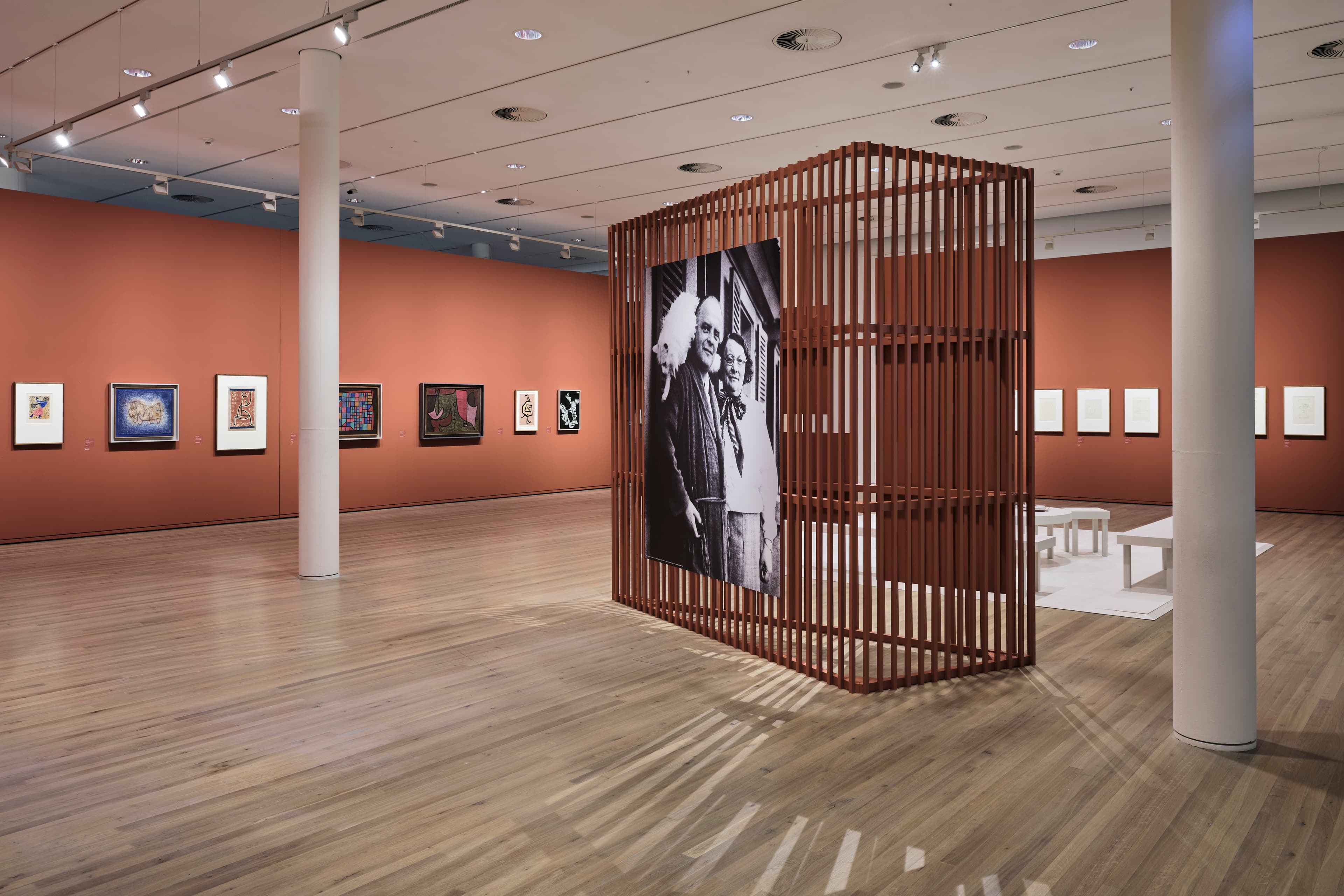Paul Klee
Paul Klee was born near Bern in 1879 and is one of the most important artists of the 20th century. He followed the artistic trends of his time with great interest, but developed an independent position and never joined any particular art movement. His thinking and work influenced and inspired subsequent generations worldwide. Paul Klee died in Locarno in 1940 after a long illness. He is buried in Bern.
Biography
1879
Paul Klee was born the son of music teacher Hans Wilhelm Klee (1849–1940) and singer Ida Maria Frick (1855–1921) on 18 December in Münchenbuchsee near Bern.
1898
After finishing his secondary education and wavering between music and painting for a long time, he decides to study art and goes to Munich where he attends Heinrich Knirr's private drawing school.
1899
Klee meets his future wife, the pianist Lily Stumpf (1876–1946).
1900
After five months, he breaks off his studies at the Munich Academy in Franz von Stuck's painting class.
1901
In July, Klee returns to his parents in Bern.
1901–1902
He undertakes a six-month educational trip through Italy with the sculptor Hermann Haller and experiences a creative crisis in view of the art of antiquity and the Renaissance.
1902–1906
He retreats to his parents' house to study on his own and creates his first reverse glass paintings and etchings.
1906
After marrying Lily Stumpf on 15 September in Bern, the couple move to Munich.
1907
On 30 September, their son Felix is born.
1911
Klee meets the artists of the Blauer Reiter: August Macke, Gabriele Münter, Wassily Kandinsky, Marianne von Werefkin, Alexej Jawlensky and later Franz Marc.
1912
17 works of Klee are part of the second Blauer Reiter exhibition in Munich. In April, he travels to Paris, where he sees Cubist works for the first time and visits Robert and Sonia Delaunay.
1914
In April, Klee travels to Tunisia with August Macke and Louis Moilliet. There, he deepens the impulses towards abstraction and colour design which he received in Paris.
1916
On 11 March, Klee is called up to the army and, after infantry training, performs his military service with the aviation unit in Schleissheim near Munich and in Gersthofen. He is able to continue his artistic work.
1916–1918
Through his exhibitions in the Berlin gallery Der Sturm, he becomes a cult figure of young art in Germany.
1920
Hans Goltz, who represented Klee in his gallery, organises a first retrospective of 362 works in Munich. The first Klee monographs are published. In October, Klee is appointed to the Bauhaus in Weimar by Walter Gropius.
1921
On 13 May, Klee moves from Munich to Weimar and starts teaching.
1923
The Berlin National Gallery organises Klee's first museum exhibition in Germany in the Kronprinzen-Palais.
1924
Art dealer Galka Scheyer founds the artist group Die Blaue Vier with Wassily Kandinsky, Lyonel Feininger, Alexej Jawlensky and Paul Klee and tries to make the artists known in the U.S.
1925
The Bauhaus moves to Dessau.
Klee takes part in the first surrealist group exhibition La peinture surréaliste in Paris together with Max Ernst, Joan Miró, Pablo Picasso and other artists.
1926
Klee and his familiy move to Dessau, where they live in one of the two-family houses built by Gropius for Bauhaus masters with Wassily and Nina Kandinsky.
1928
Klee undertakes a journey through Egypt. The hieroglyphs and the Nile landscape in particular leave their mark on his work.
1929
Several exhibitions are organised to celebrate Klee's 50th birthday, including in Berlin, Dresden and Paris as well as at the Museum of Modern Art in New York.
1931
Klee leaves the Bauhaus and takes up a professorship at the Düsseldorf Academy of Art.
1933
Under pressure from the National Socialists, Klee is dismissed from his teaching position. At the end of the year, he leaves Germany with his wife and returns to his hometown of Bern.
1935
Klee shows the first signs of scleroderma.
1936
His poor state of health makes Klee's artistic work much more difficult.
1937
Klee's art is labelled "degenerate" by the National Socialists and 102 of his works are confiscated from German museums. 15 of them are part of the exhibition Degenerate Art.
1939
Despite his poor state of health, Klee's productivity reaches a peak. He creates 1253 works in just one year.
1940
On 29 June, Paul Klee dies in Locarno-Muralto. His application for naturalisation, which had been pending until then, is approved on 5 July.

Collection
The world's largest collection of artworks by Paul Klee and several thousand archive items from the artist's estate are stored in the Zentrum Paul Klee's depot.
Read more
Archive & Research
With its extensive art collection and thanks to donations from the Klee and Bürgi families, the Zentrum Paul Klee is the world's leading research centre on the life, work and influence of Paul Klee.
Read more
Kosmos Klee.
The permanent exhibition Kosmos Klee. The Collection offers visitors a chronological overview of Klee's artistic oeuvre and presents around seventy works as well as biographical material and archives.
Read more
Media Library
In the online media library of the Zentrum Paul Klee you can discover videos, pictures and podcasts on the life and work of Paul Klee.
Read more










